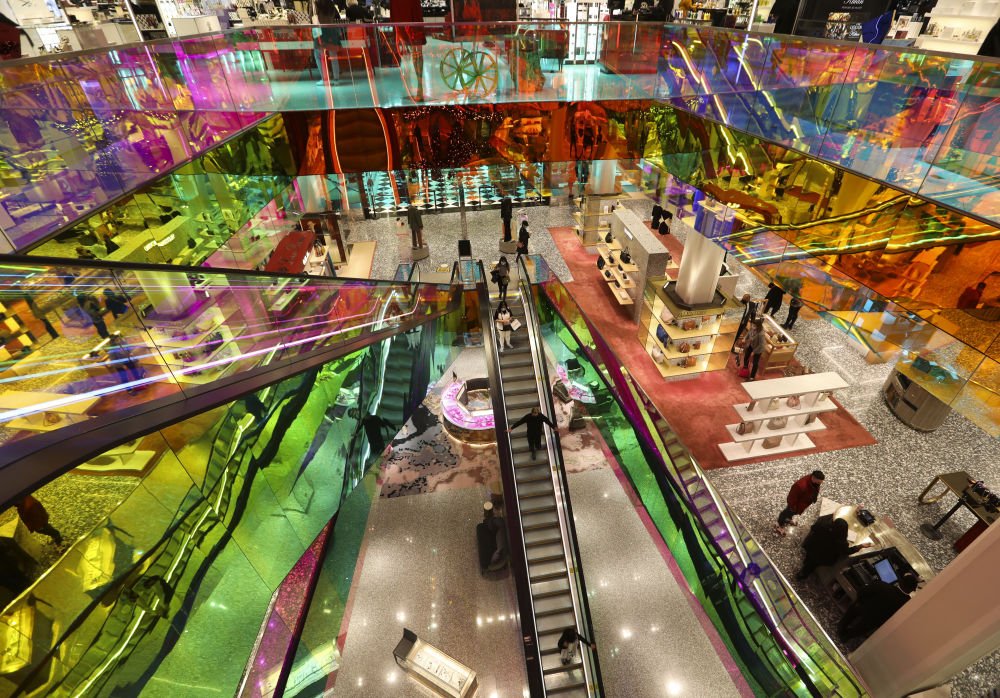Washington, November 29 going to the mall late at night and rushing into the store at midnight to buy something, the traditional impression of “Black Friday”, which kicks off the traditional holiday shopping season in the United States.
During the coronavirus epidemic, traditional consumption habits have been forced to change, and these scenes cannot be reproduced.
Major businesses in the United States postponed the opening time of the 27th, this year’s Black Friday, from zero to early morning. Many people joked that “Black Five” was late.
The American holiday shopping season begins after Thanksgiving. Thanksgiving is the fourth Thursday of November every year, and the day after that, it is called “Black Friday”, which is a climax of physical retail sales.
However, during the coronavirus epidemic, many people have scruples about going to crowded stores. The U.S. Centers for Disease Control and Prevention also listed “shopping in crowded stores around Thanksgiving” as one of the high-risk activities during the epidemic, persuading consumers with shopping plans to stay at home and buy online on the same day.
On the 27th, Outlets near Washington, D.C., did not queue up the usual queue for entry, and some stores had more clerks than customers. Some consumers can’t help sighing that there is no holiday decoration or Christmas music, “I can’t see that today is u2018 Black Five U2019”.
In fact, affected by the epidemic that has lasted for nearly a year, many American consumer habits and merchant sales methods are quietly changing. “The pandemic has both health concerns and financial strains, leaving consumers and retailers re-planning holiday shopping,” said Rod Said Seitz, vice chairman of consultancy Deloitte and head of retail wholesale operations in the United States.
For consumers, buying good and cheap goods is no longer the only demand. How to avoid contracting COVID-19 is the first priority. According to Adobe Analytics, on the day of the Black Friday, online shopping consumption in the United States reached $9 billion, a record increase of 21.6% year-on-year, while the upcoming peak of traditional online sales, Cyber Monday, is more likely to create the largest online consumption day in the history of the United States this year.
The categories of online consumption have also changed. Analysis shows that in addition to traditional online shopping goods such as electronic equipment, consumers also buy groceries, clothing and alcohol online this year’s Black Friday, and the categories of online shopping have been greatly expanded.
For merchants, it is necessary to innovate sales methods and launch more flexible promotion strategies to stimulate greater consumption enthusiasm.

This year, some merchants issued discounts in advance to attract customers; some merchants reduced the number of people queuing in the store and attracted online consumption through physical store purchase restrictions and online exclusive supply; some merchants set up roadside pick-up services to facilitate consumers to get their favorite goods faster after online shopping; webcast has also become A channel to increase sales.
Behind all the changes is the pressure brought by the spreading epidemic to the retail industry. According to the data released by Johns Hopkins University on the 27th, the cumulative number of confirmed cases and deaths in the United States has exceeded 13 million.
Patrice Luway, chief executive of clothing brand Ralph Lauren, worries that the epidemic may lead to stricter “stay-at-home orders” or other quarantine measures in many parts of the United States to further crack down on retail. At the same time, some vulnerable retailers may be forced to cut prices sharply and increase promotions, affecting profits.
Deborah Winswig, founder and CEO of Colset Research, an American retail analysis agency, said that due to the epidemic, many stores have reduced inventory, and it is difficult to replenish their shelves quickly after being snapped up. This trend may be further aggravated.



